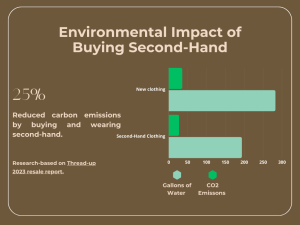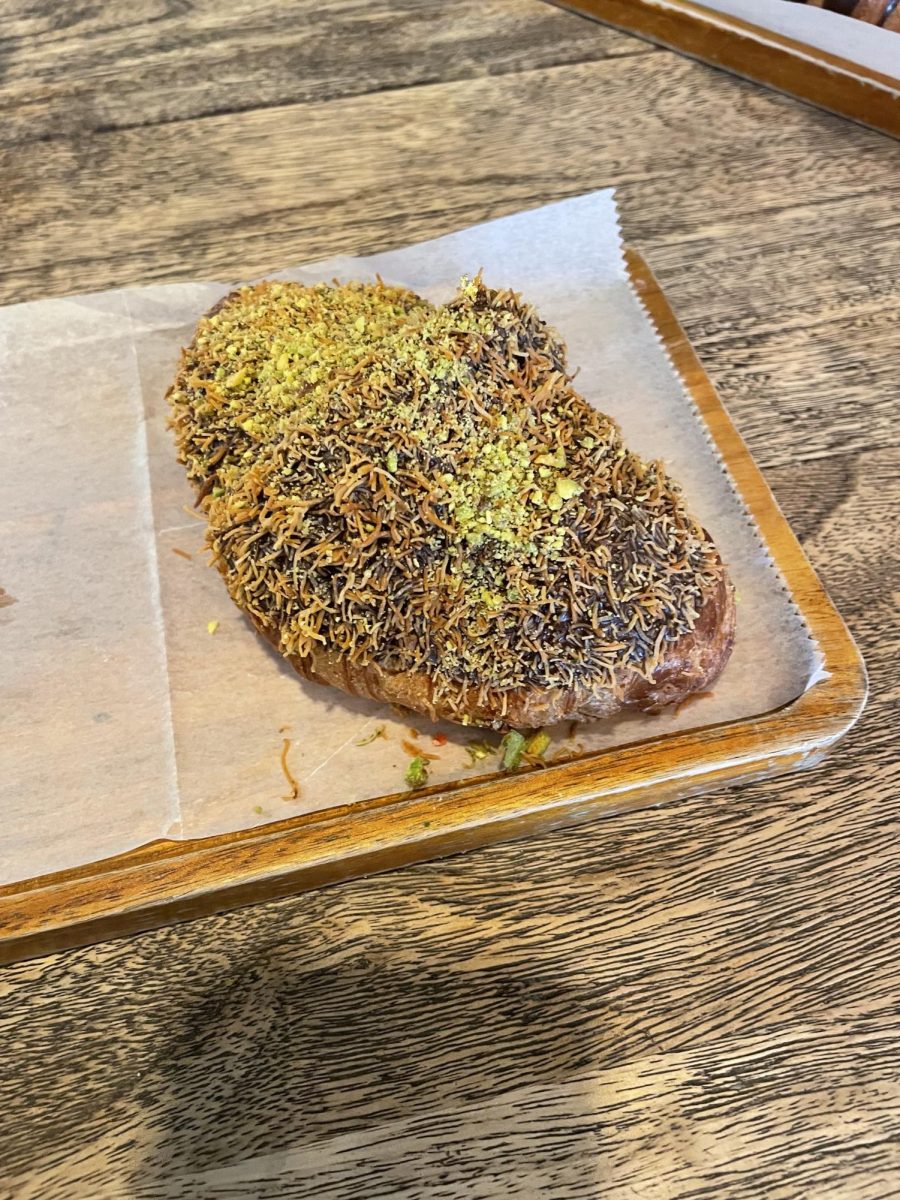As the autumn air rolls in, so does the opportunity to refresh your wardrobe without breaking the bank.From cozy, over-sized sweaters to vintage boots, thrifting lets fashion lovers embrace unique styles that no store offers.
Thrifting’s rise in popularity with Gen-Z raised the value of the secondhand shopping market from $138 to $211 billion from 2021-2023 and is expected to be $351 billion in 2027 since 83% of Gen Z have shopped or are open to shopping secondhand apparel according to thredUp resale report.
“I really like thrifting because I think it’s part of the whole process of reducing climate change,” sophomore secretary of Student for Environmental Advocacy Ariya Lee said.
“We have to use less resources and that involves reusing everything we have,”
Often, fast-fashion clothing brands use hazardous dyes and chemicals like phthalates in textile products according to a Greenpeace study. The wastewater from the clothing must be treated before it is disposed of or reused, but most of the time, in textile-producing countries, the water waste is pumped directly into bodies of water according to Environmental Science Europe study. That causes environmental pollution through emissions and it directly harms the environment.
“Nowadays, clothes are made out of plastic, which is made of fossil fuels, less clothes made out of plastic means less fossil fuels,” Lee said. “Also, cotton which clothes are made out of is a very water consuming plant.”
Microplastics form tiny fibers usually end up deep in the ocean, poisoning animals and the environment according to a Vox ocean study. A study by Frontiers in marine science found that 73% of the fish caught in mid-ocean depths in the Northwest Atlantic Ocean had microplastics in their stomach.
“Often these clothes are not meant to last long,” said Lee. “They just go back in the trash can and end up in landfills.”
Thrifting is the solution to the reduction of carbon emissions,according to the Marine Science Institute. Buying and wearing secondhand clothing reduces carbon emissions by 25% according to thredUp resale report. It is also a way to update your style and save money. Unlike fast fashion, which churns out mass-produced items, thrifting allows one to build a wardrobe with vintage, rare and unique finds that reflect personal style.

“I prefer thrifting,” sophomore president of Fashion Club sophomore Mya Deceano-Espinosa said.“At first, it might seem like something you won’t like, but when you thrift, you can find clothing items that are timeless and vintage.”
By opting to buy second-hand clothing instead of brand-new items, consumers can significantly reduce waste and contribute to environmental sustainability according to ResearchGate. Thrift shopping has emerged as a practical and effective way to embody the “reduce, reuse, recycle” ethos.
“I like going thrifting because it’s fun to go through the racks of clothes and find cool stuff,” sophomore Ivy Danforth said. “Plus, it’s affordable compared to buying from fast fashion.”
Thrift stores often have clothes for a lower price than buying new items according to University of Colorado Boulder.They also have a wide variety of clothing and styles like vintage clothes and designer clothes for a fraction of the price. Second-hand shopping is accessible to anyone and everywhere; online thrift shops such as Depop, ThredUp, and Etsy allow people to thrift online without going in person.
“Instead of buying from fast fashion, people can go to thrift stores like Goodwill, Savers in Fair Lakes and my favorite store, Unique, in Falls Church,” Espinosa said. “And even better is reusing clothes from your older brother or sister or even a cousin.”

(Huda Noorzai)








